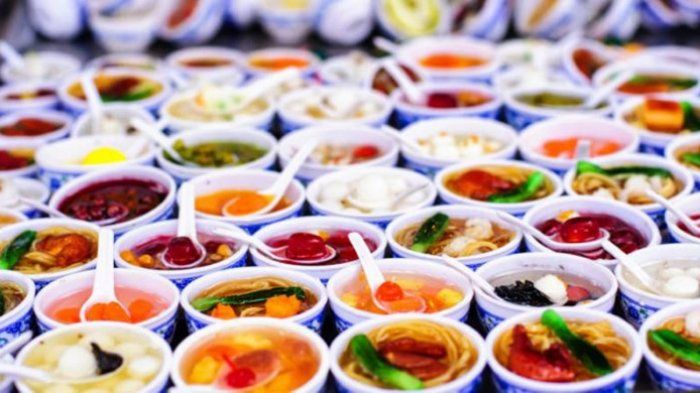Takjil Contains Hazardous Materials, Recognize Their Characteristics

DDHK. ORG – Takjil is a menu that is much sought after as a dish for breaking the fast in month of Ramadan. No wonder that every Ramadan, takiil sellers appear. But be careful, make sure the takjil that you buy and consume does not contain harmful ingredients.
Reporting from Republika, Food and Drug Supervisory Agency (BPOM) and public health Office Each region carries out takjil inspections in various regions. One of them, which was carried out by the Tulungagung District Health Office. They found takjil containing hazardous materials such as textile dyes.
The content of textile dyes can have a negative impact on health when consumed by humans. The type of textile dye that is often misused as a food coloring agent is rhodamine B. Rhodamin B is a synthetic dye commonly used in the textile and paper industry to give it a red color.
The use of rhodamine B for food has been banned in Permenkes No. 472/ Menkes/ Per/ V/ 1996 concerning Safeguarding Materials Hazardous to Health. According to BPOM RI through its official website, rhodamine B is prohibited for consumption because it can accumulate in fat and trigger disorders and liver cancer in the future.
The same thing was expressed by the doctor of community nutritionist, Dr. Dr. Tan Shot Yen MHum. Dr Tan revealed, long-term consumption of rhodamine b can accumulate in the body and cause several health problems.
It can cause symptoms of liver and kidney enlargement, impaired liver function, liver damage, physiological disorders of the body, or can even cause liver cancer," Dr. Tan told Republika.co.id, Monday (27/3).
In addition, another textile dye which is also prohibited for food and beverages is methanol yellow. According to BPOM RI, methanyl yellow is a textile dye and paint which can cause complaints such as nausea, vomiting, abdominal pain, diarrhea, fever, bad taste, and low blood pressure when consumed.
"In the long term it can cause bladder cancer," said BPOM RI through their official website.
Therefore, people need to be aware of the use of textile dyes in the food or drinks they buy, including takjil. According to Dr. Tan, ordinary people can recognize textile-dyed food or drinks by their color appearance.
“(Ordinary people) can (recognize it). Usually the colors are bright," said Dr. Tan.
In addition to textile dyes, there are also synthetic dyes which are actually allowed by BPOM RI as food coloring additives (BTP Dyes) but their use must be restricted. One of them is tartrazine which can give a yellow color.
Limits for consumption of tartrazine have been set forth in Regulation of the Head of BPOM RI Number 37 of 2013 concerning Maximum Limits for Use of Food Additives for Colorants. According to these regulations, the Acceptable Daily Intake (ADI) for tartrazine is 0-7,5 mg per kilogram of body weight.
Dr Tan said, excessive consumption of foods containing tartrazine can cause several complaints. Some of them are allergies, insomnia, asthma, hyperactivity disorder in children, to other dangerous conditions.
"Such as chromosomal damage and lymphoma," said Dr. Tan.
Regarding the healthy consumption of takjil, Dr. Tan said the principle of takjil is to break the fast. Therefore, as simple as the Sunnah of the Prophet Muhammad, Dr. Tan said that takjil in the form of water and dates is sufficient. Dates can also be replaced with date families, such as young coconut and palm fruit.
"Which doesn't need to be added anything else, because it's already sweet and refreshing," said Dr. Tan. [DDHK News]



